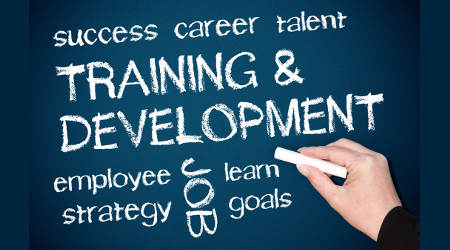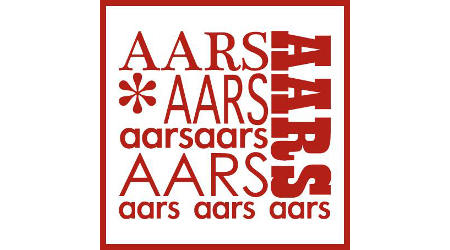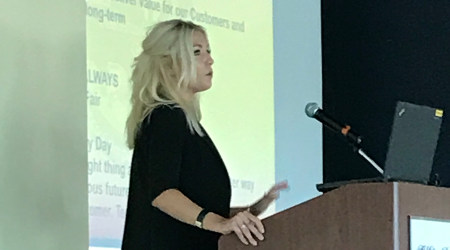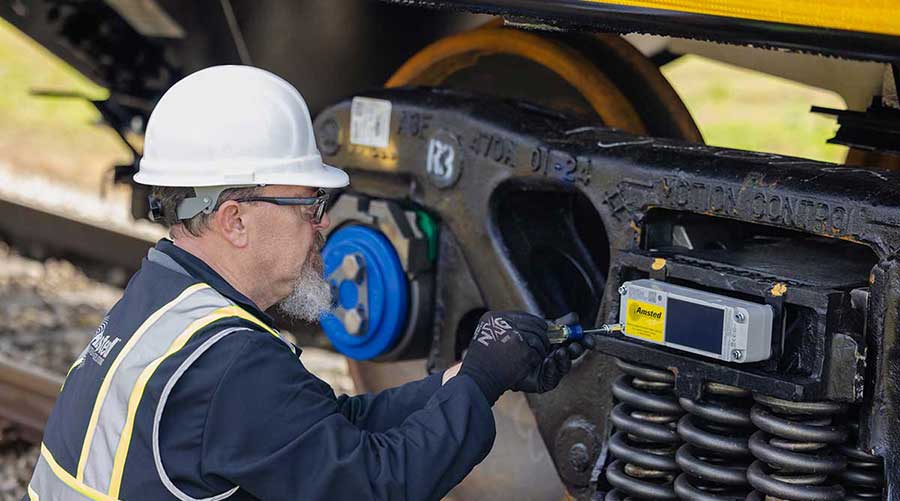Stay updated on news, articles and information for the rail industry
July 2017
Rail News: Rail Industry Trends
AARS panel: Effective training helps railroads hang on to new recruits

By Julie Sneider, senior associate editor
Recruiting and retaining younger workers and developing them into future leaders was a frequent topic discussed at the 121st annual meeting of the American Association of Railroad Superintendents (AARS) earlier this week in St. Louis.
The issue was front and center during the meeting's opening reception and dinner on July 23, which featured Progressive Railroading's presentation of Rising Stars Awards to 20 up-and-comers in the rail industry.
At the annual meeting's opening session on July 24, OmniTRAX Inc. Executive Chairman Ed Harris in his "charge to superintendents" made a pitch for encouraging younger generations to consider railroading as a career. "The opportunities in this industry are a good thing, [but] we do not have enough young people interested in this industry," he told the attendees.

Later in the morning, a panel of railroad executives talked about how good training programs can go a long way toward retaining workers by keeping them interested in their jobs and committed to their employers.
Serving on the "Day-to-Day Management Panel" were John Wright, general manager of Indiana Harbor Belt Railroad; Rachael Peterson, senior vice president of people services at Watco Cos. LLC; and Michael Collier, vice president mechanical, Genesee & Wyoming Inc.
Set aside some resources
Indiana Harbor's Wright told the AARS members that short lines can offer employee training that's "as good if not better than a Class I." Short lines that commit to planning and maintaining a training program can prepare their workforce just as well, he said.
"You have to set resources aside," Wright said. "Those resources could be as little as a book for an employee to read or as much as a course that someone on your staff should take."
Also, short-line managers need to make sure they follow up with employees after they complete training sessions or courses, Wright said. He recommended managers prepare a checklist of things the employee needs to work through and achieve over a period of time.
 Rachael Peterson
Rachael PetersonJulie Sneider
Additionally, managers should continue the formal training process throughout an employee's career. Wright advised against moving an individual into a different position at the railroad unless he or she has the experience and training necessary to do the job.
"Make your training program formal, with processes in place," he recommended.
Tailor programs to fit the company
Panelist Peterson talked about the history of Watco's corporate leadership training program known as "Watco U." Peterson — who was one of Progressive Railroading's Rising Stars Award winners in 2014 — was involved in developing Watco U.
"Whenever you develop a training program, it has to fit your organization," Peterson told the AARS members. "A lot of time companies waste training dollars by plugging in a training program that's not the right fit for your company. At Watco, we developed every program in-house."
Watco U's organizers started by asking company leadership what attributes and skills they wanted their employees to have after completing the training courses. The organizers used that feedback to establish Watco U's criteria and curriculum.
What evolved was a leadership development program for future leaders at any level of the company. Watco U aims to assist all employees in achieving the company's objectives and personal career goals.
To foster new leadership at the company, Watco U offers training to prepare supervisors for future positions as general managers and vice presidents. Enrollees are assigned to a division leader and taken through a six-month program that includes books, online training and on-the-job training.
After completing that program’' first phase, the supervisors are evaluated to determine if they're committed to finishing the program, according to Peterson.
Watco U has helped improve the company's employee retention and safety rates, she said. It also has helped initiate a culture shift at the company.
"We no longer hire anyone based on a timeframe," she said. "We take the time needed to find the right person for the job, even if it takes longer than we expected."
Employee expectations must be set
Everyone who completes an employee training program isn't guaranteed to turn into a high performer, noted Genesee & Wyoming's Collier.
"What is the main reason managers struggle to be high performers? It's because of leadership failures," Collier told the attendees.
Leaders who fail to set expectations are setting up their employees to struggle, he said.
"The second thing to keep in mind is timing," Collier added. "We fail poor performers because we wait until there is a structured time to have a conversation with them about their performance. The quicker we can get involved and help them with those expectations, the better."
Collier recommended that railroads schedule meetings with employees to discuss individual job issues on a regular basis, then draft individual improvement plans to help employees achieve performance targets.
"We owe it to those people to help them get back on track, especially if we picked them for the job in the first place," Collier said.


 2025 MOW Spending Report: Passenger-rail programs
2025 MOW Spending Report: Passenger-rail programs
 Gardner steps down as Amtrak CEO
Gardner steps down as Amtrak CEO
 Guest comment: Oliver Wyman’s David Hunt
Guest comment: Oliver Wyman’s David Hunt
 Women of Influence in Rail eBook
Women of Influence in Rail eBook
 railPrime
railPrime





